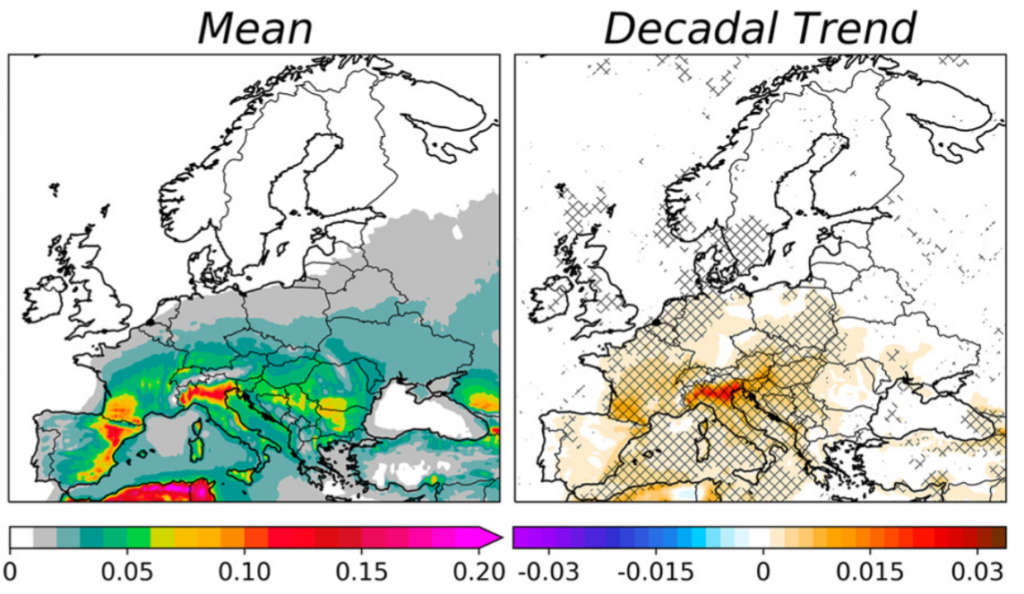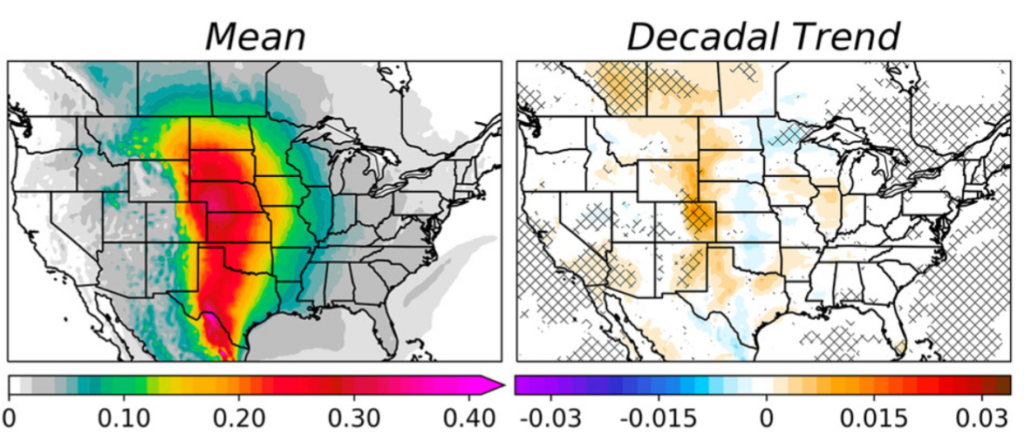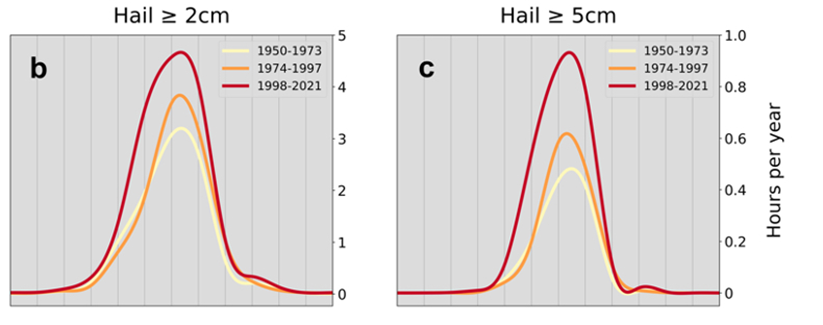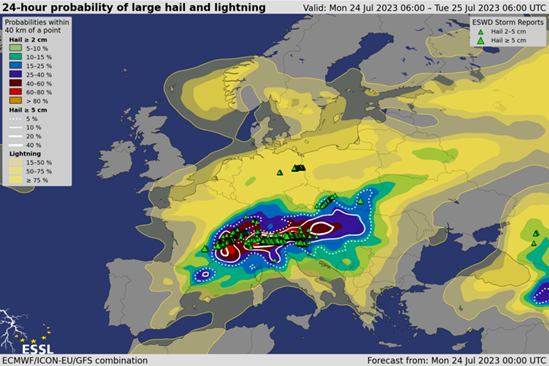A new study by ESSL, Adam Mickiewicz University, NSSL, and the Freie Universität Berlin, lead-authored by ESSL researcher Francesco Battaglioli, has been published in the AMS Journal of Applied Meteorology and Climatology
In the study, entitled “Modelled Multidecadal Trend of Lightning and (Very) Large Hail in Europe and North America (1950-2021)” they reconstructed the climatology of lightning and (very) large hail in Europe and North America since 1950 using statistical models (AR-CHaMo) trained with about 24 million lightning observations and more than 44000 hail reports.

Right: Change in the annual number of hours with very large hail per decade. Significant trends (p<0.05) are hatched.
They found that, across Europe, large (≥ 2 cm) and very large (≥ 5 cm) hail is most common across northern Italy, south-western France, and eastern Spain. Hail frequency has increased across large parts of Europe. This increase is caused by rising humidity in the lowest layers of the atmosphere.

Left: Mean modeled annual and seasonal number of hours with hail in a 0.25 x 0.25° box.
Right: Change in the annual number of hours with hail per decade. Significant trends (p<0.05) are hatched.
In North America, hail is most common across the U.S. Great Plains. Unlike Europe, the modelled hail frequency has only increased in certain areas, while it decreased in others. Areas with increasing hail include the High Plains of Colorado and Central Canada.

Focusing on two hail-prone areas, northern Italy and central Oklahoma, temporal changes in large hail frequency can be shown using “Hail Stripes”, much like those used to illustrate temperature changes, first by Ed Hawkins. These stripes show that, across northern Italy, very large hail is now 3 times more likely than it was in the 1950s.

Modeled seasonal cycles of large and very large hail for three different periods (1950–73,
1974–97, 1998–2021).
Since 1950, the season in which large hail occurs has lengthened across Northern Italy, especially because of an earlier start in Spring.

based on AR-CHaMo, available at https://stormforecast.eu
The AR-CHaMo models also have important applications in hail forecasting and are used for experimental real-time forecasts available at the website stormforecast.eu. The so-called Convective Available Potential Energy, a parameter often used by forecasters, was shown to be of limited value. Instead, the part of this potential energy released high in the storm cloud at temperatures below -10 °C was found to be a much better predictor for large hail.
This work was funded by the German Ministry of Research and Education (BMBF) within the project CHECC, part of the ClimXtreme Research Programme. Stormforecast.eu has been developed in the Project PreCAST supported by the Austrian Science Fund (FWF) and the European Centre for Medium-Range Weather Forecasts (ECMWF).
